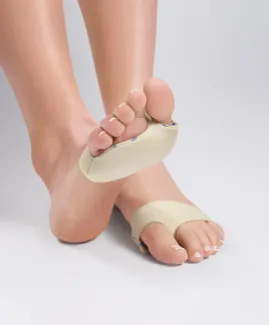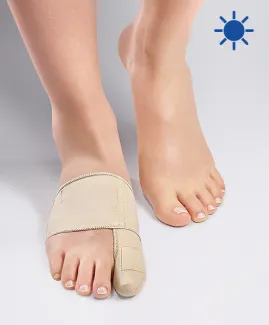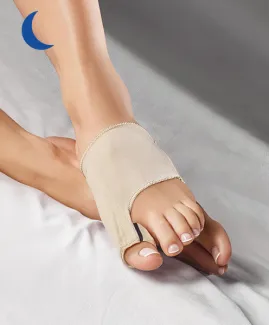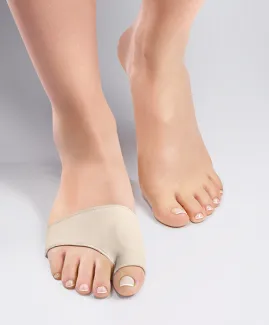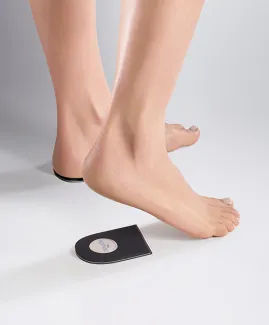
Foot pain and high heels are usually closely related. Wearing high heels modifies our posture, but doesn’t it become dangerous when these modifications affect tendons, muscles and bones? Some scientific studies give some pieces of information.
It is well-known that high heels make the shape longer and harmoniously curve the calves. But, in addition to their considerable reputation, they’re also a matter of controversy.
Do heeled shoes favour musculoskeletal disorders? What consequences do they have on our body? What kind of foot conditions are related to high heels?
A bit of biomechanics to understand the role of high heels in foot conditions
Wearing high heels (more than 5cm) not only modifies the gait but also the entire posture of the body. By significantly raising heels, the body weight is transferred on the forefoot.
As a consequence, there are higher pressures in this area. Then the foot curve increases, which modifies the forces on the tendons, muscles and joints. Moreover, when walking, the flexion of the knee is significant and involves additional forces in the patellofemoral and tibiofemoral joints.
In the case of bunions, high heels increase the deformity. As these shoes are usually tight and narrow, they force the toes to adapt to the shape of the shoe. Additionally, the pressure increases under the forefoot and so the strain on the joints.
Frequent musculoskeletal disorders and foot pain
Many studies emphasize the link between high heels and musculoskeletal disorders and foot conditions. Most of them show foot pain (hallux valgus or bunion, corns, calluses, etc.), ankle and knee conditions.
A study that measures physiological reactions
Kamal MEZIAN and his co-workers have measured the thickness of the distal femoral cartilage (in the knee), of the Achilles tendon (back of the foot) and of the plantar fascia of two groups of women. The first group included 34 women regularly wearing high heels (heel > 5cm) for at least 2 years, 5 days per week and 5 hours in a row or more. The second group included 54 women wearing flat shoes (heel < 1.4 cm). Measures were recorded by ultrasound(1).
The outcomes of this study show an increased thickness of the Achilles tendon and the cartilage of the medial condyle in the group wearing high heels. In this same group, women also presented calcaneal spurs compared with women wearing flat shoes. It concluded that the body adapts to the stress caused by heeled shoes.
Wearing high heels frequently modifies the posture and imposes modifications of tendons, fascia, bones (calcaneus or heel bone) and cartilage. These modifications are significant and change the position of the body. As a consequence, they are likely to help the development of certain knee or foot conditions.
What are the solutions to reduce knee and foot pain?
EPITACT®, podiatry and orthopaedic care specialist, has developed silicone orthotics that reduce knee and foot pain (ball of foot pain, bunion pain caused by rubbing against the shoe).
In the case of foot pain related to early bunion or hallux valgus, several solutions exist. Our braces aim to properly distribute the pressure, to reduce the friction and to realign the big toe. Discover HERE our set of medical devices intended to relieve your bunion in your shoes.
Wearing high heels can also contribute to ball of the foot pain. If it’s your case, opt for the metatarsal pads* to strengthen the plantar fat pad and avoid calluses. Also, EPITACT® also provides solutions for knee pain. If you’re suffering from patellofemoral (knee) arthritis or patellofemoral pain syndrome, our support braces will improve your comfort and relief.
*These solutions are class I medical devices that bear the CE marking under this regulation. Carefully the instructions before use. Manufacturer: Millet Innovation. 09/2021
For more details about this general and simplified approach, here is another source:
(1)Mezian, K., Ata, A. M., Kara, M., Şahin Onat, Ş., Gürçay, E., Çalışkan, A., ... & Franchignoni, F. (2019). Ultrasonographic Evaluation of the Femoral Cartilage, Achilles Tendon, and Plantar Fascia in Young Women Wearing High‐Heeled Shoes. PM&R, 11(6), 613-618.
 Pharmacie
Pharmacie